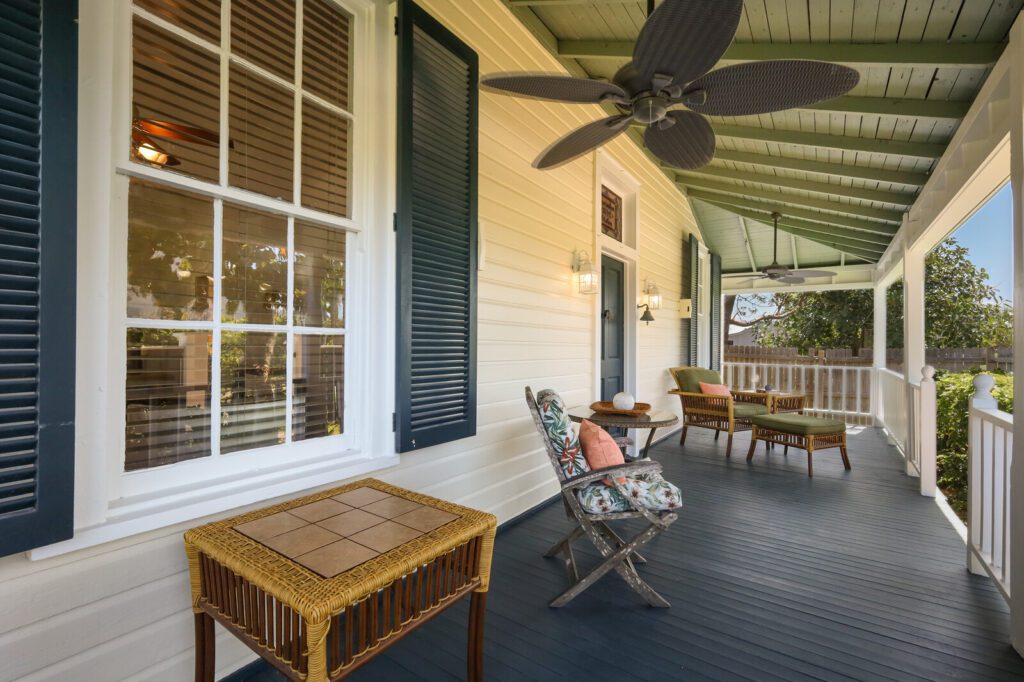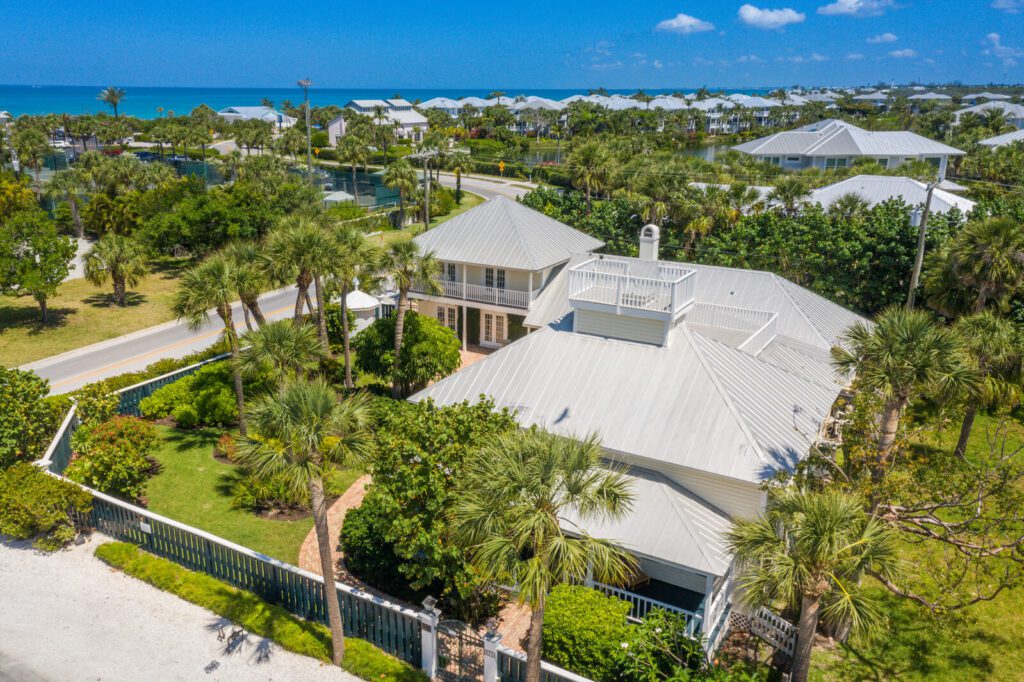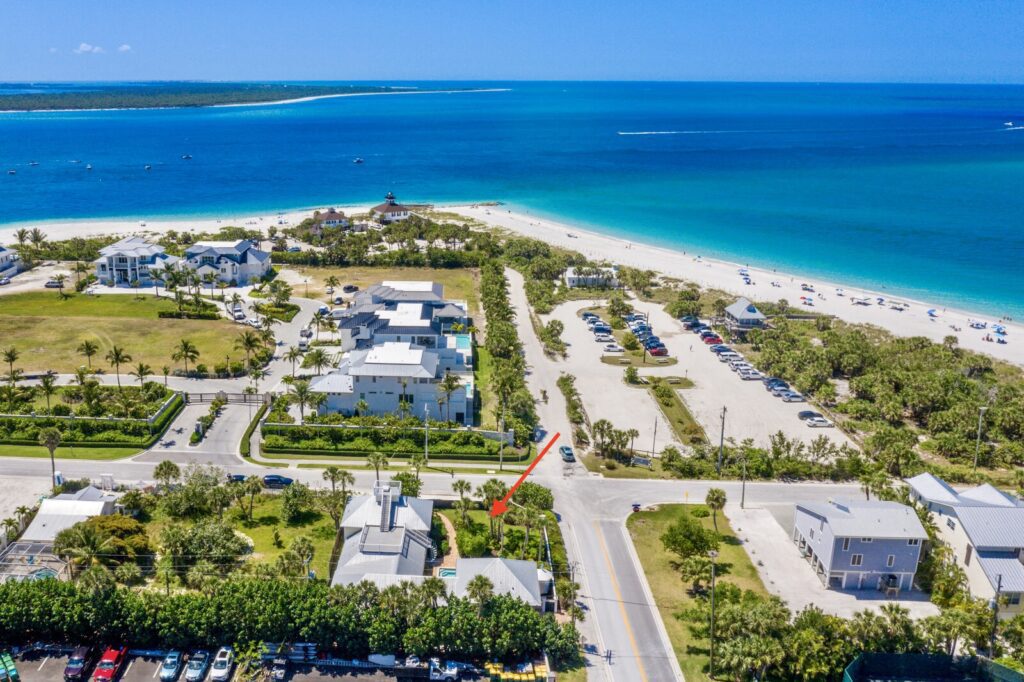Boca Grande’s oldest house, the historic Quarantine House, hits market for $4.9 million
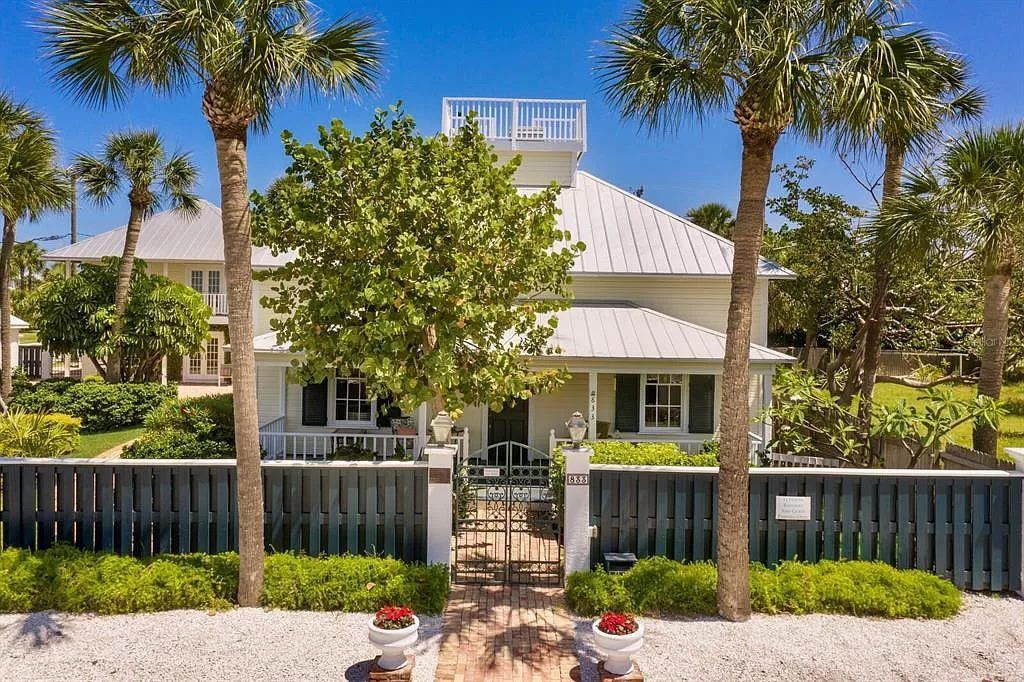
The Boca Grande Quarantine House, the oldest house on Gasparilla Island, is on the market for the first time in its history. The house, built in 1892, has four bedrooms and four baths. It includes the old 19th century house, as well as a comfy but compatible separate addition, built by Safety Harbor Builders.
“There is nothing else on this island where the realtor or their clients can walk in and you can look ‘em in the eye and say you know, ‘It’s been over a hundred years since this house has been on the market,’” said Randy Wojcik of Boca Grande Real Estate, who has the listing.
Randy and his son Daniel Wojcik have the house listed for $4,965,000. The Zillow listing has it summed up as not only a prime property near the beach, but a place of history, calling it a “distinguished residence, steeped in rich local history and preserved through generations, offers a rare opportunity to own a piece of Boca Grande’s heritage.”
“It’s got a lot of character,” Wojcik said. “We hope that whether it’s us or anybody else that brings the buyer, that they truly appreciate what this place stands for.”
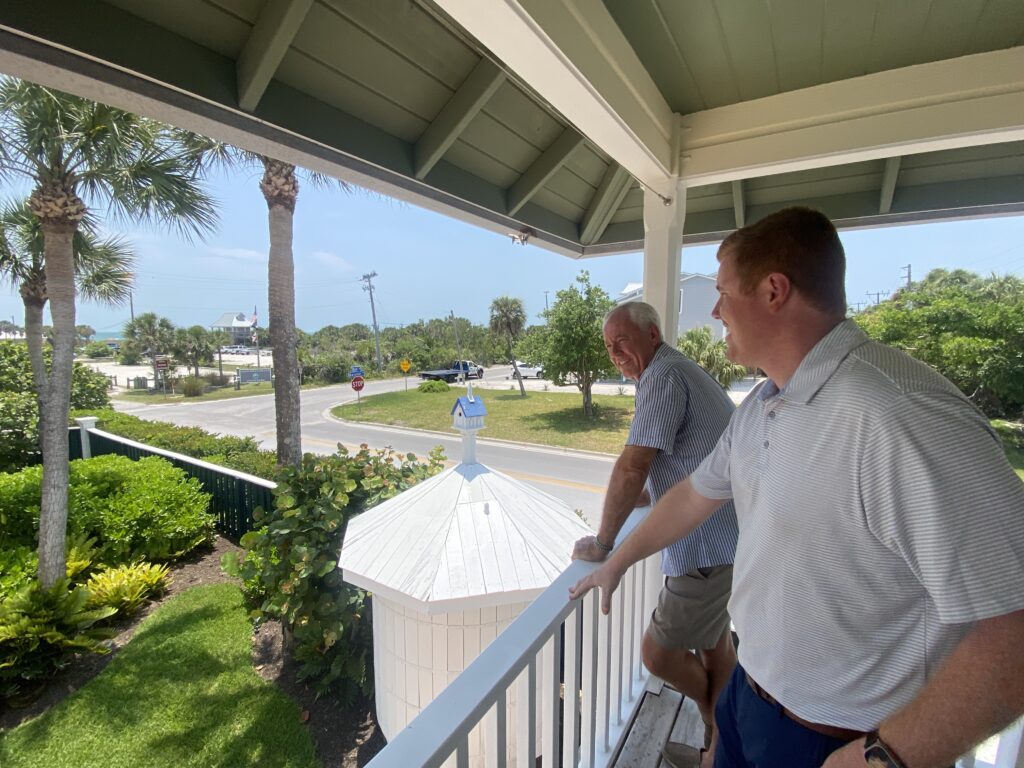
Wojcik had never actually been in the house before he began working on it as a listing. Its owner, Capt. Robert Johnson, died the previous summer. This winter, the Wojciks, along with help from Braxton Bowen’s firm, helped to prepare the house for sale, including windows and cabinets and tying up some last hurricane damage. They also helped the family sort through belongings, as Capt. Johnson was not only a harbor pilot, but a historian, reflected in the large library in the newer addition.
The building is priced according to its location. Next door is a lot on the market for $2.8 million. A tiny cottage at 845 Belcher Road sold in 2023 for $1.5 million. Lots in nearby Hill Tide are on the market for around $1.9 million, and two houses there are on the market for $14.8 million and $18 million. A townhouse just behind it in Boca Bay is on the market for $3.58 million.
“The people with the $15 million and $20 million houses could try to replicate this, but not for this price and this location,” Randy Wojcik said.
The history of the house has been well documented. It is one of only a few buildings on the island individually listed on the National Register of Historic Places. Other individual buildings listed include the Boca Grande Community Center, the Boca Grande Lighthouse, the Range Light, the Railroad Depot, First Baptist Church, The Gasparilla Inn, the Halstead and Emily Lindsley House and Whidden’s Marina. There are many buildings on the National Register in the downtown Boca Grande Historic District, but they are contributors to the district, and not listed individually. The National Register is purely honorary, though it does protect buildings from any federally funded programs that might cause the building harm.
In the National Register listing written by Sherry Piland in 1996, it states that “the house retains its integrity of design, materials and workmanship.” It is listed as significant because it is “associated with events that have made a significant contribution to the broad patterns of our history.” It won a listing not only because of its connection to maritime history, but to the general history of health and medicine.
The need for quarantine was a part of all ports, such was the fear of yellow fever, which killed more in the recent Spanish American war in Cuba than actual battle deaths. The need for the quarantines came because of the growth of the Boca Grande port. The house predates Dr. Walter Reed’s 1896 discovery of mosquitoes as the cause of yellow fever.
Florida paid $1,695 to build the cottage, furnish it and construct a boat in 1892. But in 1904, it ceased to be a quarantine station, when that operation moved to Cayo Costa. The building was then leased to William H. Johnson, who operated the pilot service at the port. The family eventually moved it across the street. The late Capt. Robert Johnson (see “Quarantine history from the late Capt. Robert Johnson”) lived at the house until his death in 2023.
It is among the oldest houses in Lee County, though the 1882 Damkohler Cottage at the Koreshan State Park near Estero is apparently older. It is an important property for the state.
“The National Register nomination indicates the property was listed for its importance in the history of health and maritime trade at the local level of significance,” said Mark Ard, Director of External Affairs for Florida’s the Department of State. The department put it on the National Park Service’s National Register, and the department runs the state’s historic preservation programs. “It was an essential part of the early operation of the Port of Boca Grande.
Sharon R. McKenzie, executive director of the Barrier Island Parks Society, visited the property during a realtor open house Tuesday. “I just wanted to see it again,” said McKenzie, who had memories of seeing the house while Capt. Johnson was alive. The Barrier Island Parks Society operates the nearby lighthouse, and assists the Gasparilla Island State Park in interpretation, as well. She said that the house is an important part to helping understand the history of the Boca Grande port and would have been a “wonderful addition to the museum complex.”
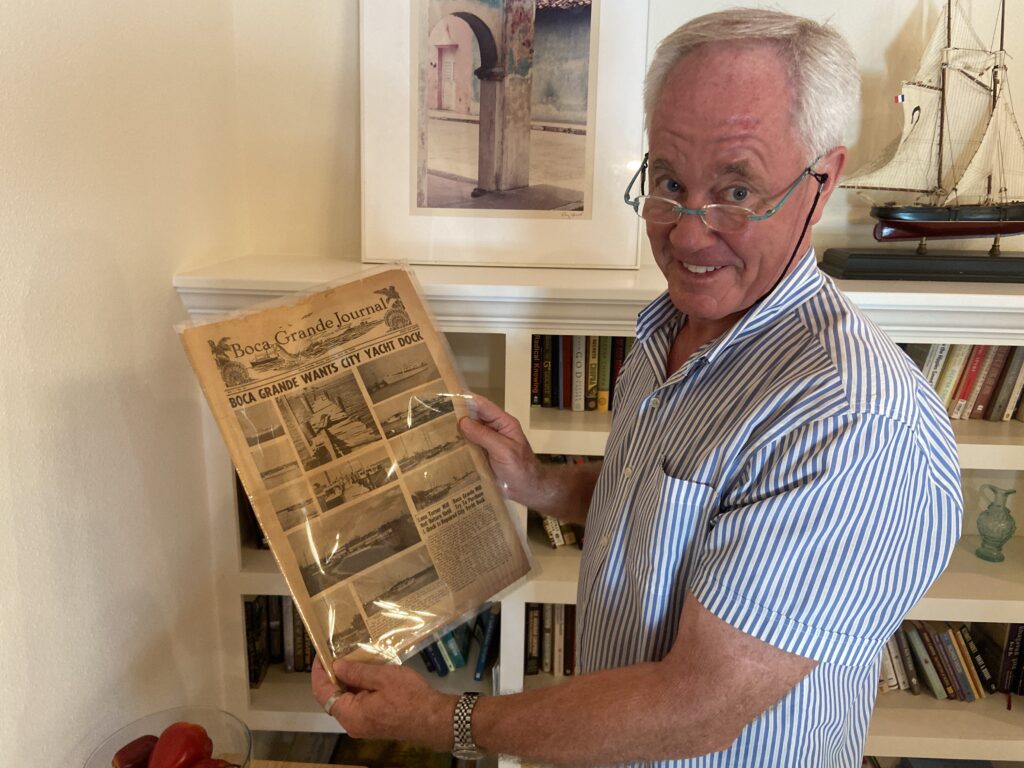
The price, at $4.9 million, is out of the range for BIPS, even if they got help from foundations and the like. “It’s a lot of money to raise,” McKenzie said. She does hope for a sympathetic owner.
“All we can do is be hopeful that the new owners care about history and want to preserve it so that the house will be around for another 100 years,” she said.
The house, with its layout and position, is well suited to entertaining, and with its location on a corner at the entrance to the State Park, it is a civic statement just to live there.
Unlike many historic houses, the details have been preserved. The walls are covered with heart pine paneling. In the hall the paneling is vertical, but in the living room the paneling is on the diagonal.
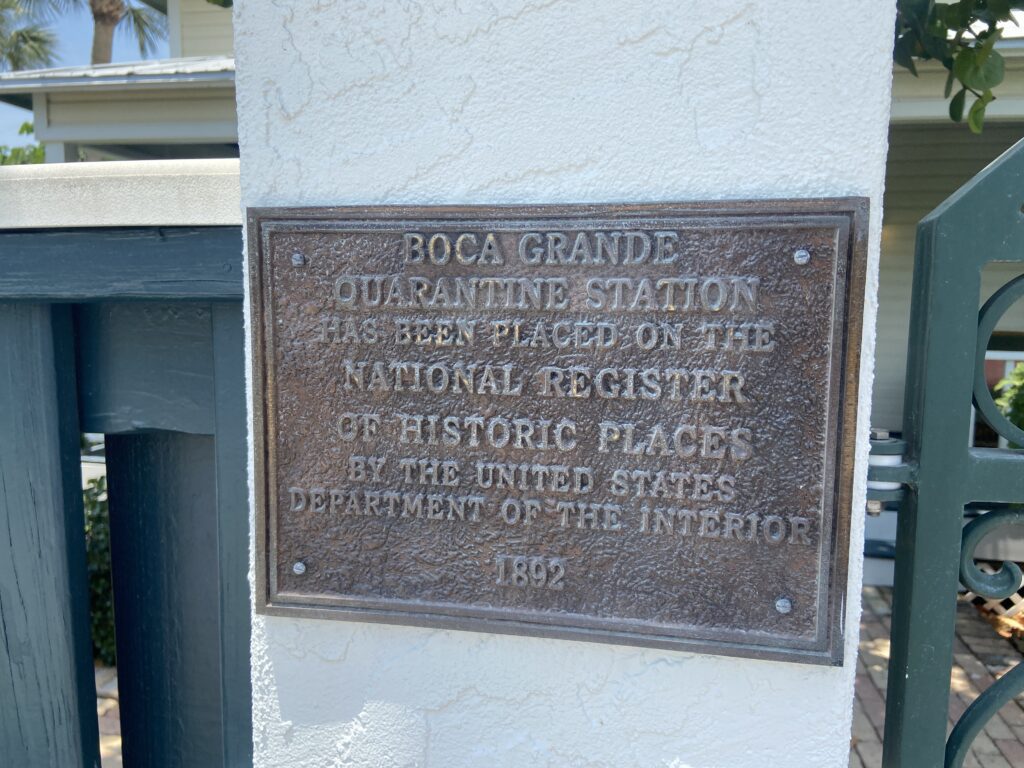
The front porch has working shutters, and single-pane windows with muntins. In some of the panes, there are even bubbles in the glass. During the hurricane, the shutters closed, and protected the windows. The house had no insurance claims during Hurricane Ian, proving that the original construction methods, and old-growth pine, held up.
The house even has a cistern, which connects to the gutters. At the bottom is a working spigot.
“I was there for a cocktail party years ago. I just remember being on the rooftop looking out,” McKenzie said. “First what an amazing view. But thinking about what it must have been like during the day.”
